For years, the Port of Sydney has been pursued as an economic development project. The current CBRM administration appears to have made it the one and only focus of local economic development.
While it seems the Port of Sydney has some significant advantages with respect to our harbour and geographic location that merit exploration, many questions and irregularities have surfaced with respect to how this economic opportunity is being managed. Individually, these irregularities may appear to be small hiccups in the process, but when viewed collectively, a concerning pattern is revealed.
At goCapeBreton.com, we attempt to stay neutral on all topics so that we can allow the people of Cape Breton to share their own opinions, conduct meaningful discussions, and come to their own conclusions. That’s what we have done with the Port of Sydney project for the past few years. But, we have become increasingly concerned about the divisive effect that the Port of Sydney project is having on the hearts and minds of Cape Bretoners … and how the limited financial resources at CBRM are being managed, because these are public funds that require full transparency of management.
Our community is facing serious challenges with chronically-high unemployment, a declining tax base, outmigration, high poverty levels, and more such issues where it is imperative that we focus our limited resources on the best solutions for our community. And, that we do so with open communications among our leaders and citizens.
Every public dollar that is spent on one initiative is a dollar that is not spent elsewhere. Every hour of time spent on one initiative is time that is not invested elsewhere. Every announcement related to one initiative is an expenditure of our community’s social capital that is gone forever.
Certainly, there are no guarantees in life, and our leaders must take risks on our behalf. But, we need to make sure that our limited money, time, and social capital is focused on initiatives with the best return on investment for our people.
Is the Port of Sydney the best focus for our efforts as a community? That’s for each citizen to decide. But, we can only make such a decision with sufficient and accurate information.
This collection of events with the Port of Sydney has led us to post this timeline with questions. Our hope is that those leading the Port of Sydney will address these concerns directly.
For clarity, this report is not intended to make any conclusions on whether the Port of Sydney project is a good idea or not. Instead, our objective is to eliminate the surrounding controversy through open and transparent communication among all stakeholders and the public. Prior to posting this live, we sent this article to the CBRM Mayor’s Office and to the CEO of the Port of Sydney to allow them the opportunity to prepare a response, whether fact checking and/or commentary, and to invite them to post their response here on goCapeBreton.com for public review. Items are numbered for easy reference when adding comments.
Serious Questions and Observations About the Port of Sydney
IMPORTANT NOTE #1
The Port of Sydney Development Corporation has undertaken two roles: The first is management of the cruise ship visits; The second is the pursuit of a shipping container terminal. This article focuses exclusively on the shipping container terminal project, as that is the one that has stirred much controversy.
IMPORTANT NOTE #2
To help follow the story, here is a very simplified list of what is needed to launch a successful port:
- A HARBOUR with specific features that is also favourably located geographically.
- SHIPPING companies that will USE the port.
- INVESTORS who will provide MONEY to build the port.
- A MARINE company that will OPERATE the port.
(Paid with fees paid by the Shipping Companies). - CONSTRUCTION companies that will BUILD the port.
(Paid with Investor money).
OBSERVATION: Arguably, Investors and Shipping companies are the toughest to secure. But, without them, there is no project. It may be reasonable to assume that Construction companies and Marine companies are easy to find when there is money available to pay them for their services, because that is their core business - fee for service. As of July 2016, progress announcements related to the Port of Sydney seem to be primarily focused on Construction companies, which seems unusual.
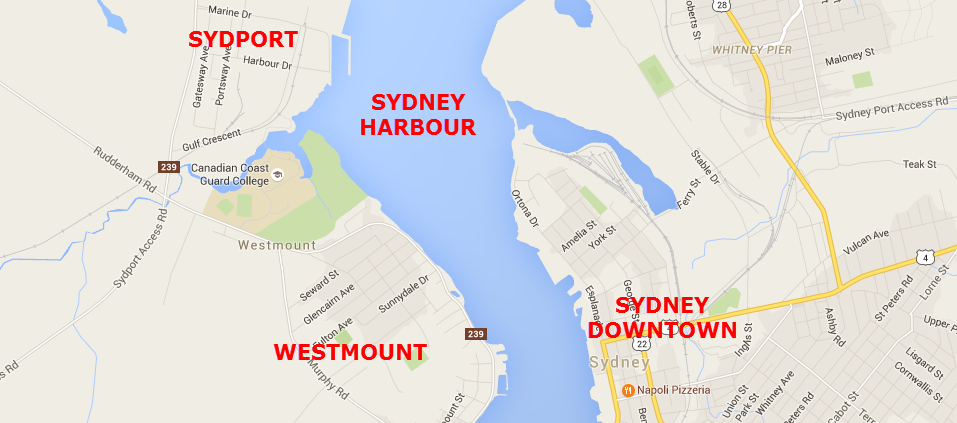
Summary Timeline
For the full story with sources for each item, view the Detailed Timeline further below. Click here to view a larger version of the Summary Timeline graphic.
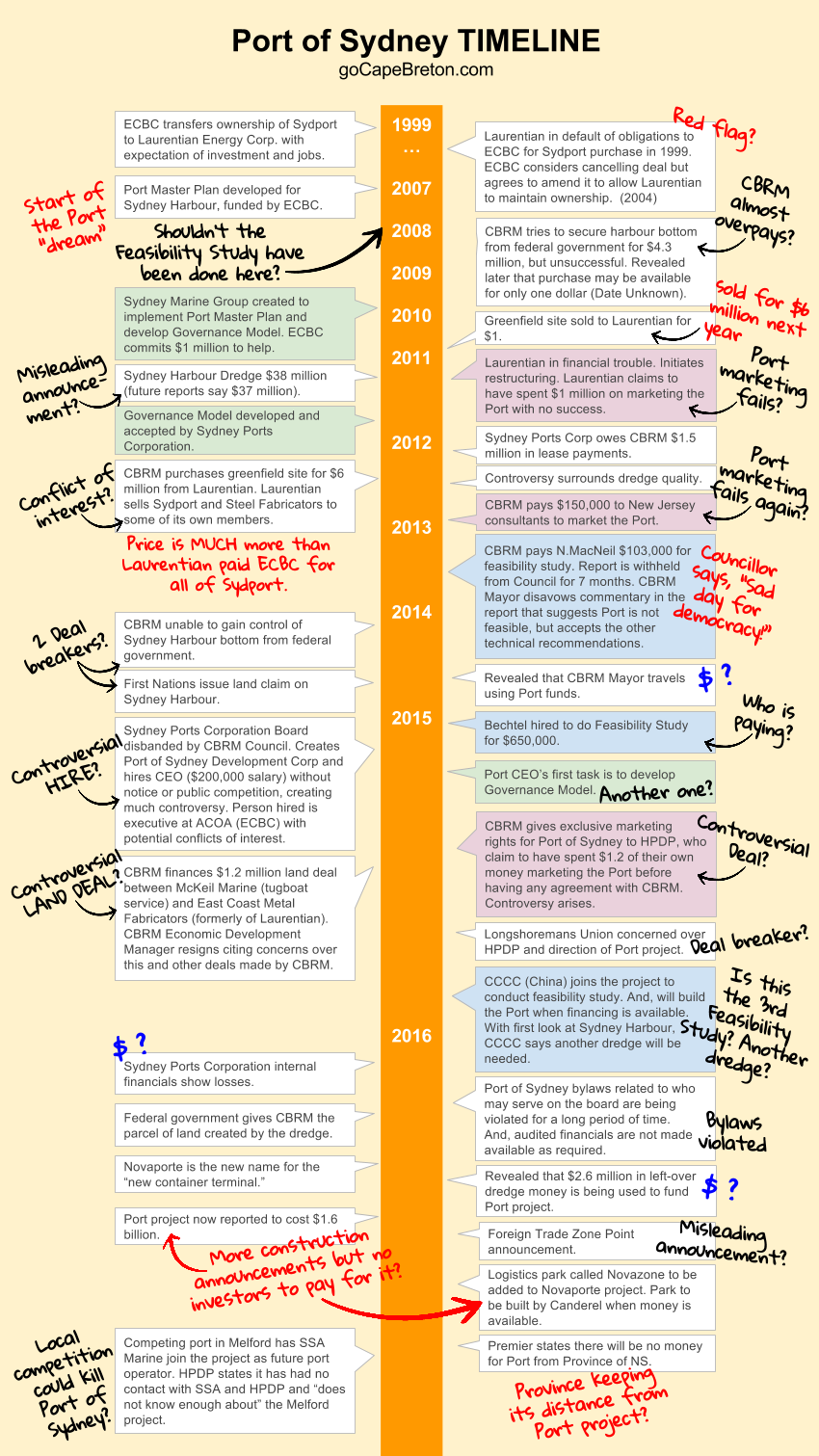
Detailed Timeline
(1) 1999. Enterprise Cape Breton Corporation (ECBC) transfers ownership of Sydport to Laurentian Energy Corporation. It appears that the terms of the deal were for Laurentian to invest in Sydport, attract businesses, and create new jobs. ECBC was a Canadian federal Crown corporation charged with coordinating economic development on Cape Breton Island and Mulgrave. ECBC had developed and owned certain properties as part of its activities, including Sydport.
Source: See below
(2) 2004. Laurentian Energy Corporation in default of its obligations to ECBC for the 1999 Sydport deal. ECBC considers cancelling deal but agrees to amend it to allow Laurentian to maintain ownership. Purhcase price is reduced from $3.1 million to $1.255 million. Change in other terms is not known.
Source: ECBC Annual Report 2005-2006
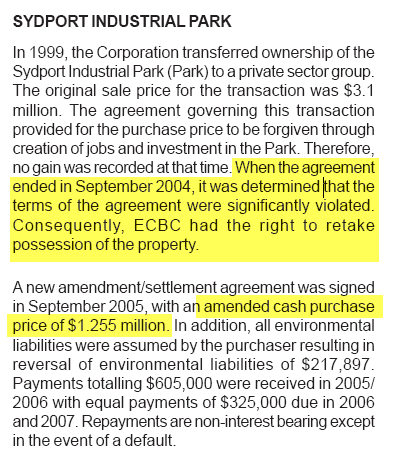
(3) NOV 2007. The Sydney Ports Master Plan is completed with funding from Enterprise Cape Breton Corporation (ECBC). It is intended to serve as the blueprint for the future of Sydney Harbour. The plan is available here on the Port of Sydney website (PDF)
Source: ECBC Annual Report 2009

(4) 2009. The Sydney Marine Group is organized "with an ultimate goal of dredging Sydney harbour allowing for the development of a container terminal. [They] are also tasked with developing a new governance structure for the Port. Enterprise Cape Breton Corporation (ECBC) commits $1 million to assist with these initiatives.
Source: ECBC Annual Report 2009
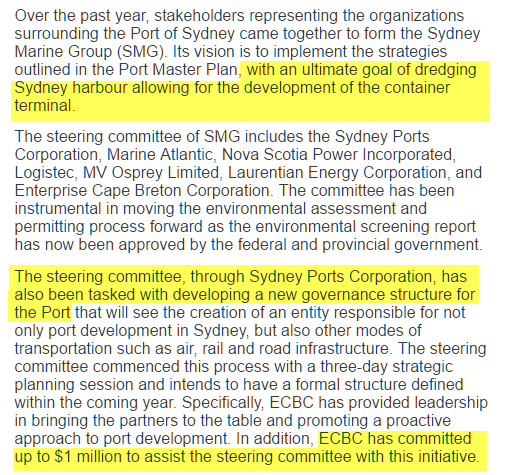
(5) DEC 2010. Announcement that $38 million will be spent on dredging Sydney Harbour. Prime Minister Stephen Harper said in a news release, "This will allow bigger ships into the harbour and create jobs in Cape Breton for the long term. [It will] unlock Cape Breton's true economic potential."
OBSERVATION: At this time, there appears to be no indication that a significant amount of additional time, money, and effort will be needed to actually realize the potential of a port. And, that the realization of a port is a high-risk venture with no assurances of success. Why would this critical information not be disclosed? Was the community purposely misled?
NOTE: Most reports after this first one have the dredge costing $37 million instead of the initial reports of $38 million. We are unsure why, but it could be because it is later revealed that there was money left-over from the dredge. More on this below.
(6) APR 2011. Greenfield site is sold to Laurentian Energy Corporation for $1. It is unclear who sold the greenfield site, but it may have been Enterprise Cape Breton Corporation. This greenfield site is adjacent to the Sydport Industrial Park and is the same land that is purchased by CBRM for $6 million 1 year later (more on this below).
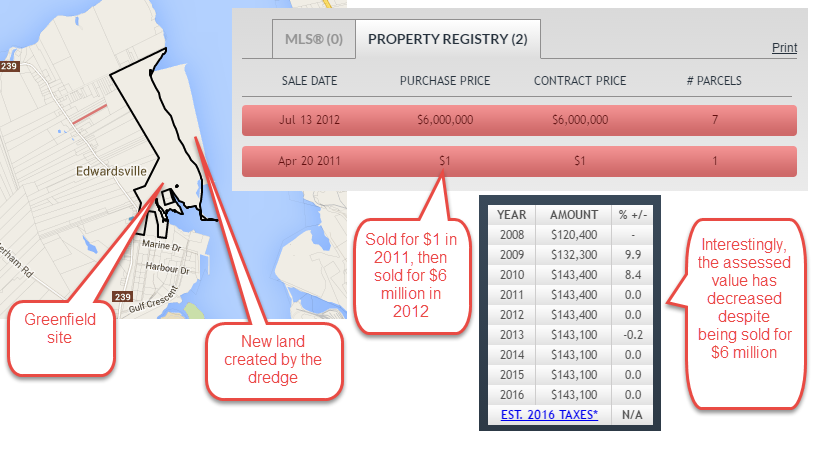
OBSERVATION: It is curious why land would be sold to Laurentian for $1 when, around the same time, Laurentian disclosed publicly that the company was in financial trouble. Note that the ViewPoint info above shows 1 parcel of land versus 7 parcels, and it is unclear why the discrepancy.
(7) OCT 2011. Controversy arises with a silt plume appearing over the dredge area, with some suggestions that the dredge may have disturbed toxic chemicals from the sea bed.
(8) DEC 2011. Sydney Ports Corporation accepts the Sydney Marine Group's governance model.
Source: DEC 2011 Cape Breton Post

(9) FEB 2012. Sydney Ports Corporation owes $1.5 million in lease payments to CBRM
But, later in early 2014, the Sydney Ports Corporation offered to pay $1 million to CBRM but the offer was refused by CBRM. There appears to have been some type of administrative agreement between the parties, but lack of transparency and perhaps a change in opinion at one or both parties, created controversy.
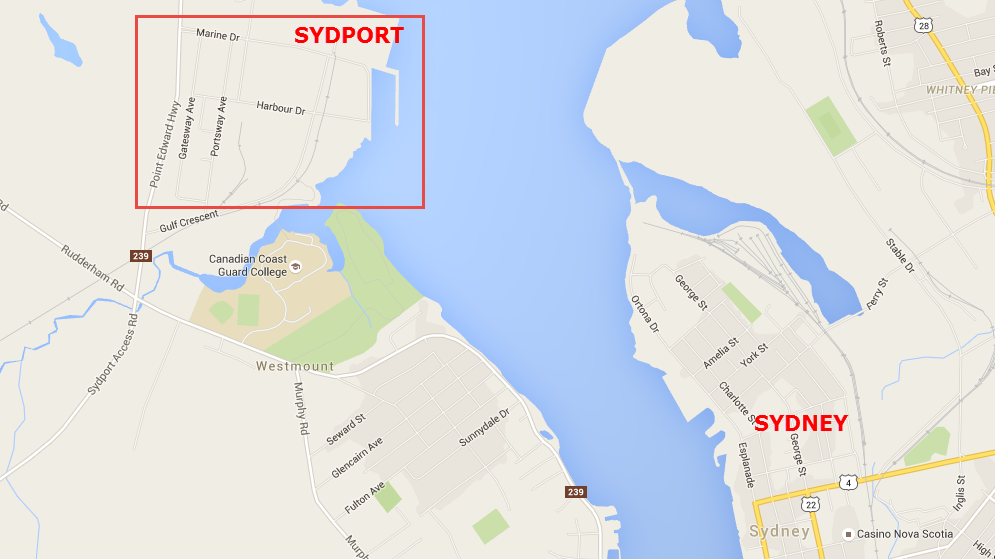
(10) MAY 2012. With some urgency and controversy, the CBRM purchases the Sydport greenfield site from Laurentian Energy Corp. for $6 million, in anticipation of future development for the Port of Sydney.
OBSERVATION: The greenfield site is harbourfront property that is thought by some to be in a location of significant value if a container port were to be built. It appears as though the greenfield site may have been originally owned and/or managed by Enterprise Cape Breton Corporation (ECBC). ECBC sold Sydport Industrial Park to Laurentian Energy Corp in 1999 (a company that appears to have been formed by a group of local business people), under favourable terms that would have Laurentian be given the Park for FREE if they met certain terms and conditions. But, Laurentian defaulted on its targets and financial obligations, as disclosed in this ECBC Annual Report from 2005-2006. And, the greenfield site appears to have been sold to Laruentian for $1 in 2011, as noted in item 6 above.
Source: ECBC Annaual Report (PDF)
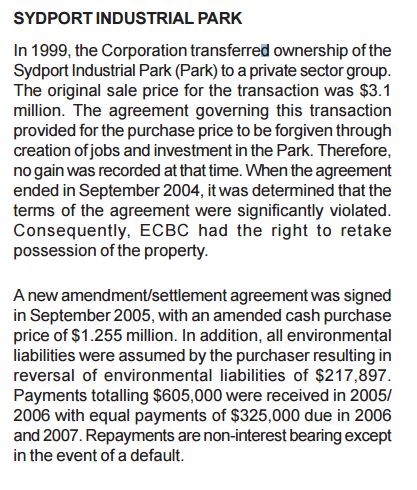
Years after the amendments/settlements noted above were made, in 2011, Laurentian Energy Corp ran into financial difficulties. An official states that over $1 million was spent on marketing its greenfield site as the location for a proposed container terminal, but no developers were found. Concerns were also expressed with how the federal government was managing harbour resources.

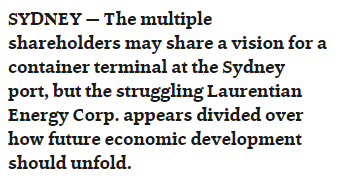
(11) JUNE 2012. Local group buys Laurentian Steel Fabricators and the Sydport Industrial Park from Laurentian Energy Corp. At the time Laurentian Energy Corp was in default of its financial obligations with CBRM and Enterprise Cape Breton Corporation.

OBSERVATION: It appears as though some of the people involved with both the buyers and the sellers are the exact same people. This raises questions about conflict of interest when public funds are in the mix.
(12) SEP 2012. Controversy arises with results of the harbour dredge. One side says it was successful, while another view is that it will require another $8 million to correct.
Source: CBCL Engineering Report (PDF)
(13) SEP 2012. Cape Breton Post editorial shows lack of confidence in project, describing the dredge as “embarrassingly incomplete” and the marketing of the harbour as “uninspiring.”
OBSERVATION: It is curious that the Cape Breton Post seemed to lack confidence in the project in 2012 but since 2015 (or earlier) has published editorials that appear to support the project. The reason for this is unknown, but two things that changed during that time were the Mayor of CBRM and the Editor at the Cape Breton Post.
(14) 2012 to 2013. CBRM hired two consultants in New Jersey on a $10,000 per month retainer for a total budget of $150,000 to market the Port.
(15) JUL 2013. CBRM pays $103,000 to consultant Neil MacNeil (MacNeil Management Consultants) to develop a report on “the Port’s future”. This payment may have been made through the Cape Breton County Economic Development Authority (CBCEDA) or its affiliate the Cape Breton Small Business Development Centre (now called Business Cape Breton). The report expressed serious doubt that a container port could be developed in Sydney.
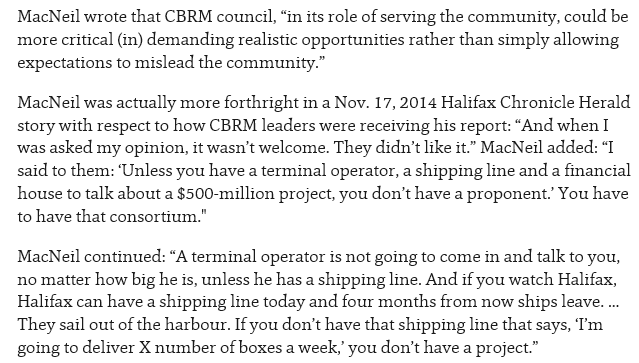
But, CBRM Mayor and most of Council disavow the commentary of the report, with the Mayor stating that the commentary “had no substantive proof.”
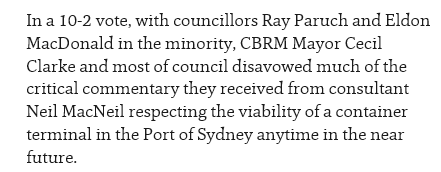
Councillor Eldon MacDonald says he was concerned that the Council was not given access to the report for 7 months. Councillor Ray Paruch added to the criticism that the report was withheld from Council.
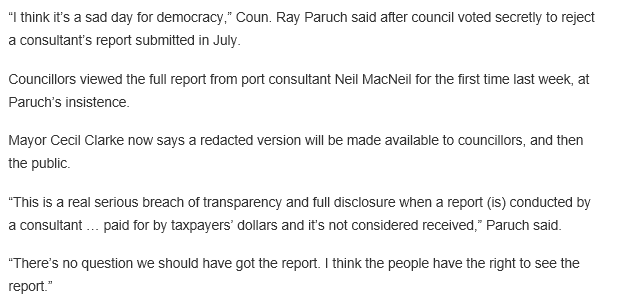
The report also suggests that CBRM nearly spent $4.3 million on the transfer of Sydney Harbour from the federal government when it could have had it for $1.

CBRM Mayor maintains that the main elements of the report were disclosed to Council and suggests there was some other agenda at play.
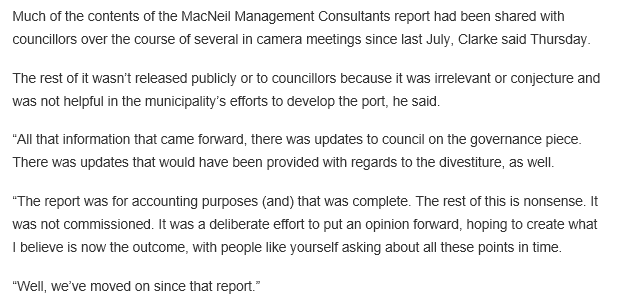
OBSERVATION: If the report was flawed, why not make this information known to Council and the public early in the process? And, why were many of the technical recommendations in the report approved by Mayor and Council, while at the same type disavowing some of the key elements? Why continue to invest millions of dollars in pursuing the container port project without addressing these concerns first?
(16) APR 2014. CBRM still unable to gain control over Sydney Harbour from the federal government. CBRM’s economic development manager, says gaining control of the harbour bottom would give the municipality control of development around the waterway. “You cannot negotiate a deal without that control. Typically, the federal government does not allow local authorities to charge harbour fees, but the municipality would like to be able to do that in order to fund harbour maintenance and possibly to fund new developments.”
OBSERVATION: As of July 2016, this has not been resolved. How can it make sense to continue to invest significant time and money if what appears to be a key element is not yet in place?
Somewhat related is that the small parcel of land next to the greenfield site that was created from the harbour dredge was transferred by the federal government to CBRM in June 2016. This new land was created when the material from the harbour bed was moved to this location. For clarity, this is not the same as the waterway issue noted above.
OBSERVATION: The federal government news release announcing this transfer used unusually strong language: “This transfer is real progress toward economic revival in the region and the province and benefits the whole country.” The language seems consistent with what was observed in item #1 above where big claims are being made, while much work and uncertainty remains. Why use such language?
(17) JUN 2014. It is reported that CBRM Mayor is traveling for the Port of Sydney project and that these travel expenses are in excess of the Mayor’s normal travel budget, and the Port of Sydney Development Corporation’s expenses are not disclosed publicly.
OBSERVATION: Why would this information not be publicly disclosed?
(18) OCT 2014. First Nations issue a land claim over Sydney Harbour, creating uncertainty in the Sydney Port process. CBRM Mayor expresses surprise over land claim.

(19) FEB 2015. First Nations request seat on the Port of Sydney board.
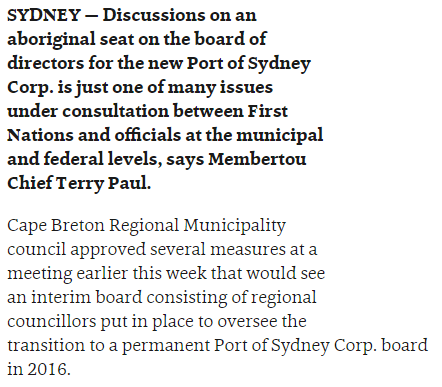
OBSERVATION: With millions of dollars already spent and the container port initiative widely known, why would the leadership of CBRM and Membertou not have dealt with these issues previously?
OBSERVATION: If a divestiture deal was expected in Oct 2014, were it not for the land claim, why has this deal not yet closed now nearly 2 years later (as of July 2016)? Has the land claim been settled? Why or why not? If it has been settled for some time, then why hasn't the divestiture deal closed? If it has not been settled, does that not put the entire Port project in jeopardy and, if so, why is CBRM continuing to invest taxpayer funds in the project?
(20) FEB 2015. The Board of Directors of the Sydney Ports Corporation had worked together for years to build up the harbourfront, including the cruise ship birth, the Joan Harriss Cruise Pavilion, and more.

But, in April 2015, the independent board was disbanded by the CBRM. Reports say that "the topic was debated behind closed doors Tuesday before a general committee meeting and then quickly ratified in public without any discussion." The Chair of the board expresses concern with how this was handled and with the lack of discussion and planning needed for proper governance. This marked the end of the Sydney Ports Corporation and the beginning of the Port of Sydney Development Corporation (PSDC).
OBSERVATION: Why was the Sydney Ports Corporation shut down? Why was this done without proper discussion and planning?
(21) At the same time the Sydney Ports Corporation was wrapped up, the CBRM appointed the most senior local executive at ACOA Cape Breton (formerly Enterprise Cape Breton Corporation) to be the CEO of the newly-minted Port of Sydney Development Corporation. The Chair of the Board of the Sydney Ports Corporation stated that the Board had no idea that a CEO was being hired and only found out about it in the media reports publicly announcing the posting.
OBSERVATION: Not only is this unusual from an internal communications perspective, but the one primary job of any Board is to hire and manage the CEO.
This CEO job was not posted for competition; i.e., no one else could apply for the job.
OBSERVATION: Hand picking people for jobs is acceptable for a private company, but when the job is government related, a public competition is normally required for transparency and to align with ethics guidelines. Surprisingly, it was only a few months earlier when the former CEO of Enterprise Cape Breton Corporation had been fired from his job because of ethics violations related to hiring, yet irregular practices were (allegedly) applied to this new CEO job at the Port of Sydney Development Corporation - a job that was given to the person who became the acting CEO at Enterprise Cape Breton Corporation when the previous CEO was fired.
OBSERVATION: Further, previous to this CEO hire for the Port, CBRM made two other hires for jobs in the Mayor’s office that were not posted for public competition: Executive Assistant ($82,000 salary) and Communications Advisor ($75,000 salary). This created public controversy at the time, and it appears that the pattern is repeated.
The person selected to be CEO had relationships with at least two of the most senior people at CBRM: The acting Chief Administrative Officer (the most senior position in the municipality) is a sibling; and, the CBRM Mayor, in a job immediately prior to being elected Mayor, was hired as a consultant (lobbyist) for the Cape Breton County Economic Development Authority using $135,000 in funds approved and provided by Enterprise Cape Breton Corporation (where the newly-hired CEO was the number-two person in charge).
OBSERVATION: In a small community, conflicts of interest related to relationships will frequently occur. This is not unusual and there is a generally accepted practice with how to overcome such conflicts through full disclosure of the conflict, and often, but not always, removing oneself from the decision-making process. Given the clear conflict of interest that existed here, why would CBRM avoid a public competition for the CEO job?
The person hired as the CEO for the Port did not have port experience.
OBSERVATION: Why hire someone without port experience? With a salary of $200,000, it is extremely likely that an open job competition would have attracted candidates with such experience. And there were other candidates locally who did have this experience.
The CEO job was awarded a salary of $200,000. This is reportedly cost shared 50/50 between CBRM and ACOA for a limited time period.
OBSERVATION: This is an unusually high salary for a container Port that does not yet exist and for someone without port experience or relationships in the port industry.
CBRM reported that the main task of the CEO’s job was to develop a governance model for the Port of Sydney. But, a governance model was already developed years earlier by a port expert. And, this work was funded by Enterprise Cape Breton Corporation, the organization that the CEO was leading at the time and presumably may have even personally approved of the funding.
OBSERVATION: Why would a high-paying CEO job be created to repeat a task that was already completed previously by a port expert?
(22) JUN 2015. CBRM Mayor reveals the arrival of Bechtel and McKeil Marine.

OBSERVATION: CBRM Mayor makes a strong claim about unanimous support to do whatever it takes to develop the port. Was this a Council vote? Is the public aware of this vote? What does "whatever it took" really mean?
(23) JUN 2015. CBRM hires Harbour Port Development Partners (HPDP) to act as the exclusive marketing agent for the Port of Sydney. HPDP consists of two business partners that established HPDP specifically to work on the Port project.
HPDP did not appear to have a background in port development. Their reported experience was in a few unrelated and somewhat unusual business initiatives with questionable success.
In Dec 2014, one of the HPDP partners was fined $60,000 by the body mandated by the Quebec government to regulate the financial markets. He pled guilty to distributing shares of a company without a prospectus.
Source: Cape Breton Post
Source: Autorité des marchés financiers (2012)
Source: Autorité des marchés financiers (2014)
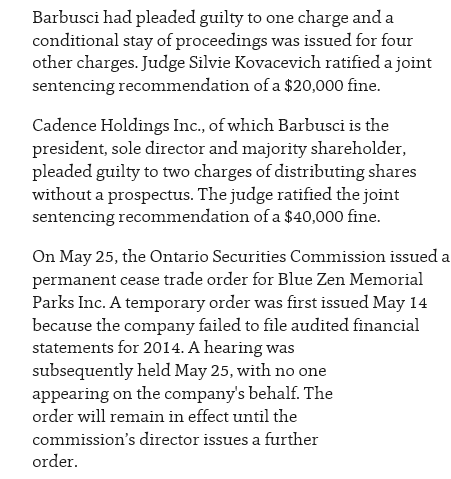
OBSERVATION: Why give an exclusive agreement to any consultant? Why do so with consultants who may not have port experience? Why do so with consultants who have been fined for doing business contrary to rules and regulations? Even if the Port of Sydney finds this acceptable, would this not be a barrier to recruiting new partners for the project who are quite likely to discover this information when doing their own due diligence?
CBRM reported that HPDP was a committed partner because HPDP had spent $1.2 million of its own money on marketing the Port of Sydney. But, when an HPDP partner was asked about this in a live radio interview, he refused to provide documentation.
Source: CBC Radio (Timestamp 4:13)
Source: CecilClarke.ca (Interview Transcript)
OBSERVATION: HPDP was formally incorporated in May 2015.
OBSERVATION: Why would two individuals spend $1.2 million of their own money on a project PRIOR TO having any type of business relationship with the CBRM? And, if they were marketing the Port of Sydney previously without formal authorization from the CBRM, then how were they representing themselves and their relationship with CBRM in their business meetings?
OBSERVATION: If HPDP claiming to spend $1.2 million was a factor in CBRM's decision to work with HPDP, then presumably this expenditure was verified by CBRM, yes or no? Should this not be public record? Was it a cash expenditure or was it some calculation of sweat equity?
Reports in Dec 2015 indicate that investments by HPDF have increased to $2 million. No confirmation or evidence has been provided to support these numbers.
Reports in Feb 2016 indicate that investment by HPDP had grown to $3 million. No confirmation or evidence has been provided to support these numbers.
OBSERVATION: A private business has every right to keep its internal financials confidential. But, when doing business on a government-related project, particularly one which is being conducted under some type of joint-venture structure, the expenditures related to the project should be disclosed to some extent. Further, as soon as the $1.2 million and $3 million numbers were presented to the public as justification for working with HPDP, this instantly created an expectation and obligation for full disclosure on behalf of all parties.
(24) JUNE 2015. The Longshoremans Union expresses concern over the project. It seems the Union was supportive of the Port of Sydney project years earlier, but recent changes have made them withdraw their support.
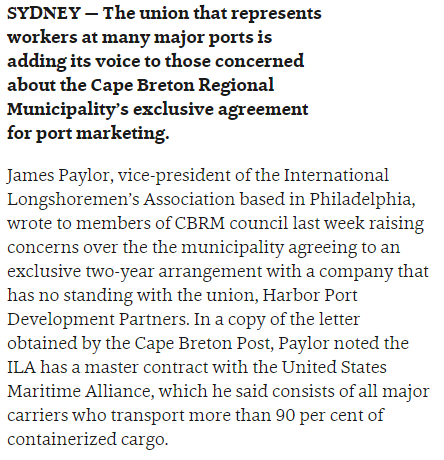
(25) JUN 2015. CBRM announces that McKeil Marine would establish a tugboat service in Sydney Harbour, and that this is an important piece of infrastructure needed for the Port of Sydney project. It was also announced that CBRM purchased a property in Sydport from East Coast Metal Fabricators for $1.2 million and is leasing this property for 20 years to McKeil Marine on a cost-recovery basis over 20 years. Councillors express concern over how the deal was done and the vote was taken in Council.
OBSERVATION: This deals seems highly unusual. Why would a cash-strapped municipality act as the financier for a private property sale between two companies? Why would those companies not be encouraged to do the deal between themselves. Further, if CBRM is acting as financier, how is it in the public’s interest to do this on a cost-recovery basis, where there is risk involved?
OBSERVATION: McKeil Marine seems to have sufficient financing available to do such a deal on its own.
OBSERVATION: East Coast Metal Fabricators appears to be the former Laurentian Steel Fabricators, noted earlier in this report.
(26) Shortly after the McKeil announcement, the CBRM Economic Development Officer resigned his position. In a radio interview, he expressed concern that this and/or other deals made by CBRM may be in violation of the Municipal Government Act. In June 2016, this same Economic Development official issued a lawsuit against CBRM for constructive dismissal.
Source: CBC Radio
OBSERVATION: Is the McKeil deal in violation of the Municipal Government Act? Why or why not?
(27) DEC 2015. CBRM announces that the Chinese city of Dalian has become a “Sister City” of the CBRM. This is positioned by CBRM as an avenue for increased trade between the two cities. No specifics are provided.
OBSERVATION: Reports of the Sister City announcement fail to disclose that Dalian actually has 16 other Sister Cities (although it is reported by a local media source). Is this really a tangible relationship that will result in meaningful economic activity for CBRM?
(28) DEC 2015. Announced in local news reports that Chinese firm China Communications Construction Company (CCCC or “Quad C”) was coming to build a $1.2 billion container terminal in Sydney. This appears to have created some excitement in the community. But, these reports were wrong. These reports were later corrected to say that CCCC was not actually building the port, but will build the port if and when the more than $1 billion in investment funds are secured by CBRM and HPDP. And, that CCCC will conduct a feasibility study.
Source: DEC 2015 Building the Port - Cape Breton Post
Source: MAR 2016 Only Doing Feasibility Study - Chronicle Herald
Source: DEC 2015 Confirmed by CBRM on goCapeBreton.com
OBSERVATION: Was this big mistake a case of sloppy journalism, or was the media and public misled with incomplete or inaccurate information?
OBSERVATION: Initially it was suggested that CCCC would be conducting a feasibility study at its own cost. But, later it was revealed that CBRM or the Port of Sydney would be paying for some of CCCC's expenses. Who is paying for what exactly? Why is taxpayer money being used to pay for CCCC's participation at all?
(29) DEC 2015. It is revealed that Bechtel has already been hired to conduct a feasibility study for $650,000. Bechtel says it will continue to work with CBRM on the Port project despite the addition of CCCC. CBRM Mayor says that Bechtel is working to determine the cost of building and operating a container terminal.

In a radio interview, a Bechtel official confirmed they are doing a feasibility review but would not disclose if they are being paid and by whom. When asked if Bechtel would be a partner in the future of the Port, he replied, “We are purely an engineering and construction firm. When I say partner, I mean team member, not an investor.”
OBSERVATION: It is unclear if this $650,000 expenditure was previously disclosed. If not, why not? And, from what CBRM budget is the money coming from? Also unclear if this is a cash payment being made by HPDP. It also brings into question why CBRM and HPDP continues to use the term “partner” even though it can be easily misinterpreted by the public.
(30) DEC 2015. CBRM and HPDP proclaim CCCC’s participation as a demonstration of the momentum being gained for building a container port in Sydney. But, this raises some serious questions.
CCCC has no experience building ports on the East Coast of North America.
Source: Chronicle Herald
Peter Leach of JOC.com, an international trade, commerce, and transportation journal, said he didn’t know anything about CCCC in a local radio interview.
Source: CBC Radio (Timestamp 8:44)
CCCC was sanctioned by the World Bank.
Source: Chronicle Herald

It was revealed that CCCC also approached Melford to do business together. Melford is a competing shipping container port project near the Canso Causeway that has been underway for 10 years. Yes, there are two such projects being pursued in/near Cape Breton. The Vice President of Marketing at Melford International Terminal Inc stated that Melford declined to work with CCCC because their port equipment was not as modern as what is available elsewhere in the world, and that the equipment suggested by CCCC may have been used equipment.
OBSERVATION: Does the Port of Sydney project not have these same concerns? Why or why not?
CCCC official suggests that another dredge of Sydney Harbour may be necessary stating, “Of course, it needs to be further dredged.”
Source: CTV News (Timestamp 0:55)
OBSERVATION: After spending $37 million to do the first dredge (with seemingly little or no benefit to CBRM), a second dredge may be needed? Why was this not discovered prior to doing the first dredge? Surely, engineering work at that time could have revealed this possibility and perhaps saved the expenditure of these funds.
OBSERVATION: CCCC is a construction company. Any construction company invited to build something will of course be interested in the project, particularly if they will be paid $1 billion to do it. In fact, large companies will send their people all over the world to explore winning new projects, and they do so at their own cost. Why is CBRM paying CCCC public money for any expenses whatsoever? Is this really necessary?
OBSERVATION: It is unclear what promises may have been made to CCCC by CBRM. Does CCCC have an exclusive agreement to develop the Port of Sydney or to provide equipment? If so, such an exclusive could expose CBRM to inflated costs (because of lack of competition) and could turn away other potential partners (again because of lack of competition). Is this not a concern?
OBSERVATION: CBRM, HPDP, and the Port of Sydney frequently use the terms “partners” and “partnerships” to characterize the companies that they are attempting to work with. “Partnership” in business is a very specific term with very specific meaning. In fact, most legally-binding business agreements include a clause that explicitly states that the parties are NOT forming a partnership. In light of this information, why does CBRM insist on calling CCCC a partner? Is that legally accurate?
(31) JAN 2016. Councillor Ray Paruch shares “notes from past presentations to council and from my own research” about the Port of Sydney. He raises a number of questions, including this one:

OBSERVATION: It seems unusual that a Councillor would have to rely on his own notes and research to discover information that presumably should be made available to Council in their fiduciary responsibilities to the public. Why was this information not made available? Who withheld it? Under what purpose or authority?
OBSERVATION: Does this mean that CBRM has paid four companies to do Port studies? And, it seems that three of them have all been described as "feasibility studies." Is this not unusual? If not unusual, then why is any type of feasibility study being undertaken AFTER tens of millions of dollars and years of effort have already been invested? Aren't feasibility studies normally done first to determine if a project is worth pursuing or not?
(32) FEB 2016. Novaporte (with an “e”) is the new name for the “new container terminal”.
(33) FEB 2016. It is revealed that the Sydney Harbour dredge project had $2.6 million left over with $1.2 million (reports vary) set aside for navigational aids to help ships enter and exit the harbour. These funds were not used for their intended purpose, but instead have been used to support the container port project. How these funds are being spent is not fully revealed to the public. Reports suggest that $300,000 was spent by the Port of Sydney with more expenditures planned.
OBSERVATION: Why is this not fully disclosed? Will the harbour not need navigational aids? Why not apply the funds elsewhere in the community?
OBSERVATION: When the dredge was completed, why was it not disclosed that there was money available?
(34) MAR 2016. CBRM clarifies that CCCC will be conducting a feasibility study in the Spring of 2016 to determine if the container port project should proceed. It is suggested that CCCC would cover the costs of the study and that this demonstrates CCCC’s commitment to the project, but later it is revealed that CBRM set aside $60,000 for CCCC’s local travel and accommodations. CBRM states that CCCC will pay its own airfare to Sydney.
OBSERVATION: After years of focus and tens of millions of dollars of public money already invested in the Port of Sydney project, why is a feasibility study being done now? Why would it have not been done at the very beginning? Was the report by Neil MacNeil not some semblance of a feasibility assessment? What about the feasibility review that Bechtel was paid to do?
OBSERVATION: If CCCC’s primary business is building structures, is it not a conflict of interest to depend on CCCC for a feasibility study? What are the chances that a company that could be paid over $1 billion to build a port will say that the Port of Sydney project is not feasible? As one person commented on goCapeBreton.com, will they not build a port in the middle of the desert if paid to do so?
OBSERVATION: CCCC representatives visited Sydney in March 2016 but since that time there have been no further reports of the feasibility study being undertaken (as of July 2016).
OBSERVATION: If CCCC is to conduct a feasibility study, or do any other type of work on the Port of Sydney project, will CBRM release a detailed accounting of what will be done when by whom and for how much cost?
(35) MAR 2016. In a presentation by the CEO at the Annual General Meeting, the Port of Sydney Development Corporation was presented to be in a profitable or break-even position, when, through further questioning, it was revealed that it is not. The CEO’s salary makes the Corporation unprofitable. And, it has not been paying fees owed to CBRM.
Source: Local Xpress (March 2016)
Source: Local Xpress (April 2016)
OBSERVATION: Why not present financial information with full accuracy?
(36) The Articles of Association of the Port of Sydney have very specific bylaws as to who may NOT serve on the new Board of Directors of the Port of Sydney. The Directors of the Sydney Ports Corporation have repeatedly violated the bylaws, and acted contrary to their fiduciary responsibilities without providing justification for doing so. The Board consists of government officials and municipal politicians with no port experience, and little or no business experience, and whose very participation on the Board is in direct violation of Clause 5.02(a) of the Articles of Association.
Source: Port of Sydney Articles of Association (PDF)
In February 2015, CBRM Mayor says board will be replaced by April 2016, but at the Annual General Meeting this promise is ignored, leading Councillor Ray Paruch to make a point of criticizing the process.

OBSERVATION: Why are by the Corporation’s bylaws being violated? And, not for a short period of time, for a long period of time?
(37) MAR 2016. Port of Sydney holds Annual General Meeting. Councillor Ray Paruch makes his concerns public.

The Port of Sydney also refuses to release audited financial statements by the date required in its Articles of Association.
(38) MAY 2016. The Port project is now being reported as a $1.6 billion build.
(39) MAY 2016. The Canadian Federal Government announces that CBRM is now a Foreign Trade Zone Point. This allows businesses to warehouse product or raw materials so that they can temporarily defer potential import/export duties.
HPDP claims that “we had to secure [a foreign trade zone].”
Source: Video Presentation (Timestamp 24:52)
HPDP states that this designation “could pay enormous dividends down the road.”
OBSERVATION: The Foreign Trade Zone Point designation is actually not exclusive to CBRM. In actual fact, ALL OF CANADA is a Foreign Trade Zone and has been for years (not to be confused with the term FREE Trade Zone). CBRM has been granted no special capabilities. It appears as though the public announcement was simply to say that there is now a local organization (Business Cape Breton) that can be contacted by organizations seeking information about the Foreign Trade Zone program (although, this same information is easily accessible online for free). This raises the question of why this was presented in such a way that has led people to believe that there is more to this initiative than there really is. It further raises the question of why HPDP would suggest that the program in CBRM is so important to the development of the Port of Sydney when it is already available everywhere in Canada? For further clarity, the Foreign Trade Zone does not save companies from paying taxes. It only allows them to DELAY the payment of certain taxes (duties) by a few months or years. And, only very few companies would ever qualify for this benefit because only certain types of products qualify.
(40) JUN 2016. CBRM says that “CCCC is expected over the summer” and that “the company is developing a technical feasibility study for the container terminal and it's hoped it will play a leading role in engineering and construction.” CBRM Mayor states that former prime minister Jean Chrétien is involved in the project as an international advisor and that there will be “lots of updates made about the project over the summer.”
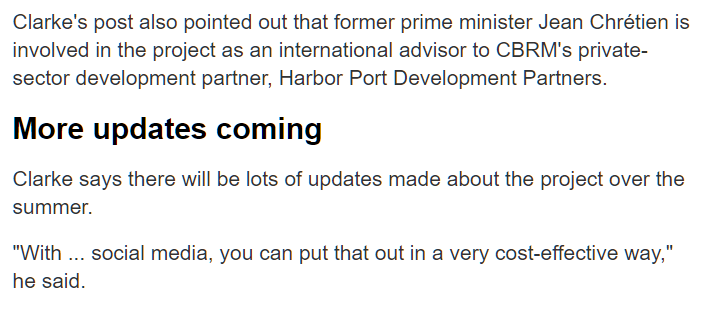
OBSERVATION: What is the status of the feasibility study and why does it appear to be later than expected? Is Jean Chrétien being compensated for his participation and who is paying?
(41) JUN 2016. Officials from CBRM Sister City of Dalian, China visit Cape Breton. This visit did not seem to be announced in advance. Jianwei Zhang, Counsellor, Dalian Foreign Affairs Office said about the visit: “They have worked out a very good strategic plan for Novaporte, although now it is something like a concept port and (there’s) still a lot of work ahead of them, we think that it is a very good concept which is worth following up in the future,” Zhang said. “Our city is a major port city in the eastern part of China, and our port is very well-connected with the outside world.”
(42) JUN 2016. Novaporte announces that an adjacent logistics park, called Novazone, will be included as part of the Port project and that real-estate company Canderel is on board to build it. No financing for the build is announced.
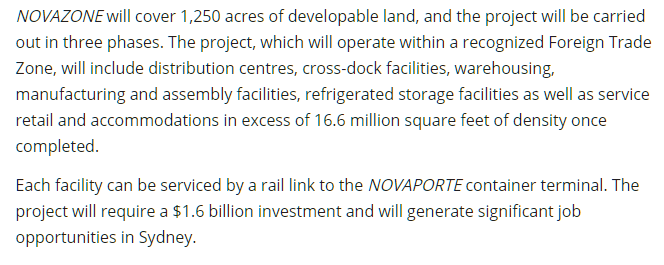
OBSERVATION: Similar to the observations with the CCCC announcement, why are construction companies being brought on board before the $1.6 billion in required financing is secured? Are exclusive relationships being established? Will such relationships drive away potential financial investors who may fear that the construction work will not be put out for competitive bidding?
(43) JUN 2016. Premier of Nova Scotia announces that there will be no money from the province to build a container terminal in Sydney.
Source: CBC News

OBSERVATION: The Port of Sydney project is not exactly "all private development" given that tens of millions of taxpayer funds have been used to do the dredge, and more has been spent by CBRM in pursuit of the project.
(44) JUL 2016. Melford announced that it had signed an agreement for SSA Marine to be its port operator, should its port be built in the near future. It is important to note that if a port is built at Melford, this would likely be the end of the Sydney Port project (and vice versa). According to the announcement, "[SSA Marine is] the largest container terminal operator in North America and the largest independent terminal operator in the world.”
Source: Cape Breton Post
When the CEO of HPDP was asked about the Melford announcement, he said: “We know of [SSA Marine], we know that they’re a good solid firm, but we’ve had no relationship, no contact with them in the past.”
OBSERVATION: It is surprising that HPDP would have had no contact with the largest player in the industry. Would it not be reasonable to assume that SSA should have been one of the first companies to contact? SSA had not committed to the Melford terminal until recently, so it does not appear as though competition would be an issue. Why would HPDP travel around the world looking for "partners" without even contacting the largest terminal operator, who is nearby and clearly interested in doing business in Cape Breton?
OBSERVATION: When asked about the Melford project, the CEO of HPDP also said, "He doesn’t know enough about the other Nova Scotian proposal to comment on it in comparison to Sydney’s." Why would HPDP not make efforts to know all the details of a competing port that is only a few miles away and could completely derail the Port of Sydney project if it were to proceed?
(45) AUG 2016. HPDP signs Memorandum of Understanding (MOU) with the Cape Breton Island Building and Construction Trades Council. Jack Wall, the President of the building and construction trades council, said that he "sees the MOU as a legally binding document, which would put potential terminal operators and shippers’ minds at ease with labour stability. There will be no labour interruptions.” HPDP CEO said the shipping industry continues to suffer major losses around the globe, which makes attracting a terminal operator more challenging, adding, "“What’s difficult is to convince the operator to sign today, not knowing if they’ve hit bottom yet in their industry.”
Source: The Cape Breton Spectator
OBSERVATION: Is it not premature to be signing an MOU at this stage, before the project is even close to being shovel ready? The latest feasibility reports have yet to be completed. Further, MOUs are never legally binding (this is why they are described as "Memorandums of Understanding" and not "contracts"). Why is the the President of the Council suggesting that they are considering it to be legally binding? Is it not dangerous to be signing away the labour rights of its members. Was this voted upon by the membership?
OBSERVATION: HPDP's comments about the shipping industry seem contrary to the enthusiasm shown in earlier communications.
(46) SEP 2016. The International Longshoreman's Association (ILA) held a press conference to announce their endorsement of Rankin MacSween for Mayor of CBRM. Statements made by the ILA suggest a lack of confidence in the current administration's work on the Port project. James Paylor, Assistant Organizer for the ILA, says that the the ILA is supporting MacSween's candidacy because of his dedication and integrity. Paylor added, "Protecting the interests of the working class is what we are doing here. [There's a] major contrast between the existing group that's in place now, versus a new and refreshing way of thinking. Commitment and dedication are the key components that make the initiative real, and that's the creation of jobs for an area that is in desperate need of those jobs. Rankin hasn't thrown things out to the public for the purpose of making him look good politically. He's taken a very positive business-like approach."
Source: ILA as reported on goCapeBreton.com
END OF REPORT AS OF JULY 17, 2016
This report is not intended to make any conclusions on if the Port of Sydney project is a good idea or not. Instead, our objective is to eliminate the surrounding controversy through open and transparent communication among all stakeholders and the public. As noted above, prior to posting this live, we sent this article to the CBRM Mayor’s Office and to the CEO of the Port of Sydney to offer them the opportunity to gather and post their feedback here on goCapeBreton.com for public review. Items are numbered for easy reference when adding comments.
Have your say below.

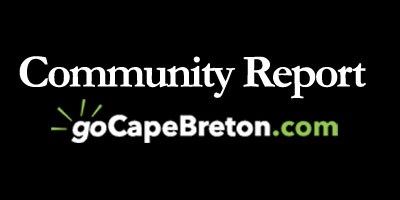


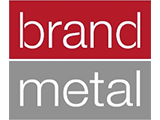
50
Log In or Sign Up to add a comment.- 1
arrow-eseek-e1 - 13 of 13 itemsFacebook Comments